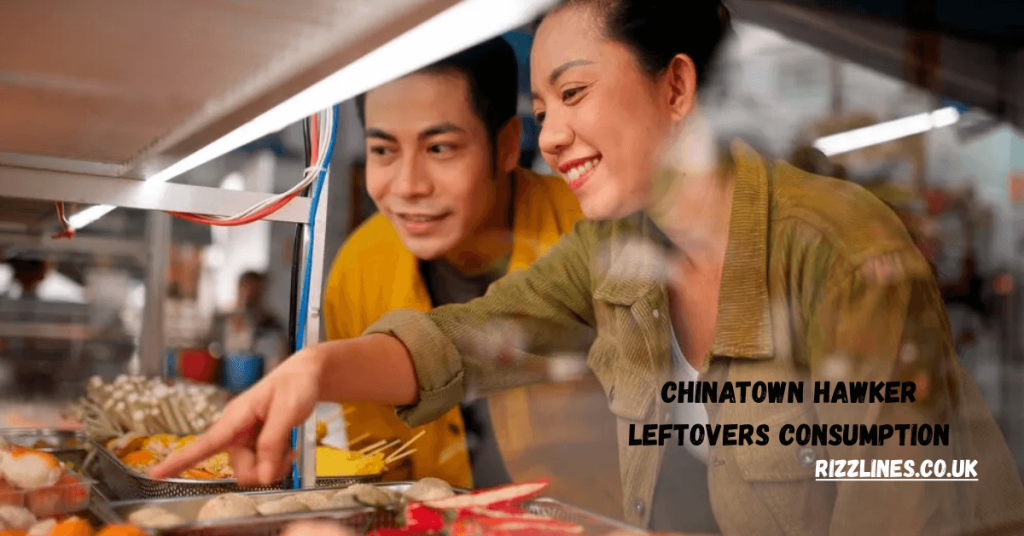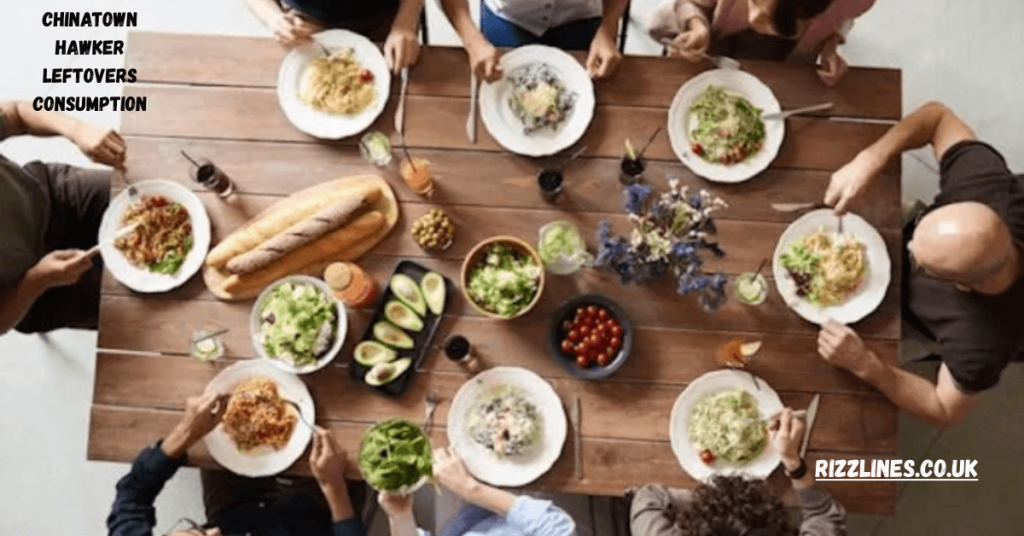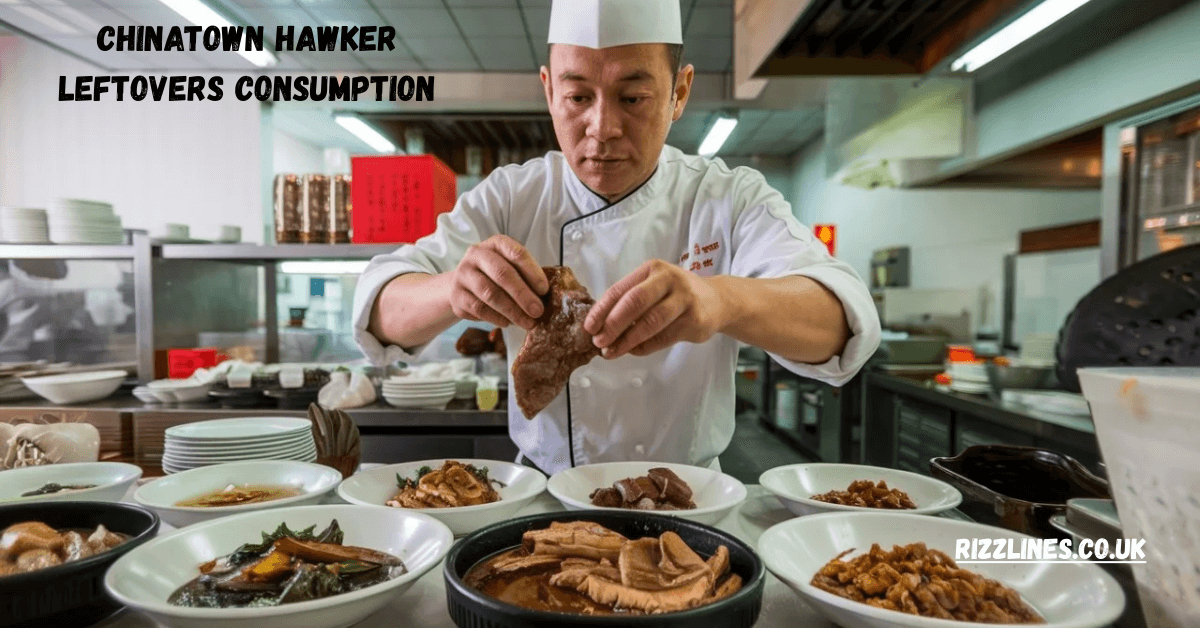Introduction:
Chinatown’s hawker centers are the beating heart of Singapore’s street food culture. These vibrant food hubs offer an incredible variety of Southeast Asian cuisine, attracting locals and tourists alike. However, with the abundance of food comes the issue of leftovers. While food waste is a global concern, Chinatown’s hawker centers present an opportunity for a more sustainable approach—one where leftover consumption is embraced rather than wasted.
By adopting mindful eating habits and promoting food sustainability practices, Chinatown’s hawker culture exemplifies how frugal dining habits, food preservation, and community food sharing can work together to reduce waste. This article explores the economic, social, and environmental significance of consuming hawker leftovers, offering insights into how vendors and customers alike can contribute to a more sustainable food future.
The Quintessential Hawker Experience
Hawker centers are more than just places to eat—they are cultural institutions. A walk through Chinatown’s bustling food courts reveals a world of flavors, where hawker vendors serve everything from fragrant Hainanese chicken rice to sizzling char kway teow. The affordability and variety make hawker centers a favorite dining option, but their significance goes beyond convenience.
These food courts serve as communal spaces where people from all walks of life gather. Shared dining experiences create a deep sense of connection, turning mealtime into a social ritual. Yet, amidst this rich culinary tradition, food waste remains a pressing issue. Encouraging sustainable eating practices within Chinatown’s hawker culture can help preserve its authenticity while addressing the growing challenge of food waste reduction.
Understanding Leftovers: A Cultural Perspective
In many Asian cultures, food is revered, and wasting it is considered disrespectful. Traditional food preservation methods—such as drying, fermenting, and pickling—have long been used to extend the life of meals. Chinatown’s hawker centers reflect this cultural mindset, with many vendors practicing resourceful food preparation to minimize waste.
Moreover, consuming leftovers is not seen as a compromise but as a way to honor food. Whether it’s repurposing rice into fried rice dishes or using yesterday’s ingredients for hearty broths, these practices showcase culinary sustainability. By shifting perspectives and celebrating the value of leftovers, Chinatown’s hawker culture can lead the way in sustainable dining initiatives.
The Value of Leftovers
Economic Efficiency
Food waste is not just an environmental issue—it’s an economic one. According to the Food and Agriculture Organization (FAO), one-third of all food produced globally is wasted, leading to billions of dollars in losses. In Singapore, food waste statistics show that thousands of tons of food are discarded annually, much of it from hawker centers.
By encouraging leftover consumption, hawker vendors can cut costs and increase profits while customers can enjoy more value for their money. Simple practices like offering discounted leftover meals or repurposing unsold food into new dishes can transform waste into economic opportunity.
Social Eating
Chinatown’s hawker culture thrives on shared dining experiences. In many cases, groups of friends or families order multiple dishes to share, often resulting in leftovers. Rather than discarding uneaten food, sharing leftovers among tablemates or packaging them for later consumption fosters a sense of community and responsibility.
Community food-sharing programs further amplify this practice. Some hawker centers are adopting initiatives that encourage diners to donate untouched leftovers to those in need. This social approach not only reduces food waste but also strengthens the bonds between people, making dining an even more meaningful experience.

Food Preservation
Preserving food has been an essential practice for generations, and hawker vendors have long relied on creative techniques to extend the shelf life of their dishes. Many traditional food preservation methods—such as refrigeration, vacuum sealing, and repurposed food recipes—are now being integrated into Chinatown’s hawker scene to minimize waste.
Customers, too, can adopt mindful eating habits by storing leftovers properly and finding innovative ways to enjoy them later. By embracing food preservation strategies, both vendors and diners contribute to waste minimization strategies that align with Singapore’s broader culinary waste reduction policies.
The Environmental Impact of Food Waste
Food waste has severe environmental consequences. When food is discarded, it doesn’t just waste the resources used to produce it—such as water, energy, and labor—but also contributes to greenhouse gas emissions. The decomposition of food in landfills releases methane, a potent contributor to climate change.
Chinatown’s hawker centers, as key players in Singapore’s food landscape, have the power to drive change. By promoting eco-conscious food vendors and implementing sustainable dining initiatives, they can significantly reduce their environmental footprint. Encouraging customers to consume leftovers is a simple yet impactful step toward culinary sustainability.
Best Practices for Chinatown Hawker Leftovers Consumption
For Hawker Vendors
Hawker vendors play a crucial role in reducing food waste. Here are some best practices they can adopt:
- Offer smaller portions: Providing flexible portion sizes helps customers order what they can realistically finish.
- Implement repurposed food recipes: Unsold ingredients can be transformed into new dishes rather than discarded.
- Sell discounted leftovers: Some hawker stalls already offer discounted meals toward closing hours, ensuring that food is consumed rather than wasted.
- Participate in food donation programs: Partnering with community food-sharing programs allows vendors to redistribute edible leftovers to those in need.

For Customers
Customers, too, can contribute to a more sustainable Chinatown hawker culture. Here’s how:
- Order mindfully: Being conscious of portion sizes prevents unnecessary leftovers.
- Take leftovers home: Bringing reusable containers to pack unfinished food promotes sustainability.
- Share meals: Dining with friends and splitting portions ensures that less food is wasted.
- Support eco-conscious food vendors: Choosing hawker stalls that practice waste minimization strategies encourages more vendors to follow suit.
Conclusion:
Chinatown’s hawker centers are more than just places to eat—they represent a rich culinary heritage, a spirit of community, and a commitment to sustainability. By embracing leftover consumption, vendors and customers can work together to reduce food waste, lower environmental impact, and make the dining experience more meaningful.
As the world moves toward more sustainable food practices, Chinatown’s hawker culture stands as a beacon of mindful eating habits and culinary sustainability. Through small but powerful actions—such as ordering responsibly, repurposing food, and sharing leftovers—we can preserve this iconic food culture while ensuring a greener, more food-conscious future.
(FAQs)
1. Why is leftover consumption important in Chinatown’s hawker culture?
Leftover consumption helps reduce food waste, preserves cultural traditions, and promotes sustainable eating habits within Chinatown’s hawker centers.
2. How do hawker vendors minimize food waste?
Vendors implement strategies such as offering smaller portions, repurposing unsold food, and participating in food donation programs.
3. What are some ways customers can contribute to food sustainability?
Customers can order mindfully, take leftovers home, share meals, and support hawker stalls that practice waste minimization.
4. What are the environmental impacts of food waste?
Food waste contributes to resource depletion and greenhouse gas emissions, making waste reduction crucial for environmental sustainability.
5. How can Chinatown’s hawker centers lead the way in sustainable dining?
By adopting food sustainability practices, promoting community food-sharing programs, and educating diners on mindful eating habits, Chinatown’s hawker centers can set an example for food conservation efforts worldwide.
Chinatown’s hawker culture is a living testament to the power of food appreciation. By embracing leftovers and adopting sustainable dining initiatives, we can transform the way we consume, conserve, and celebrate food.
READ ALSO: KPschedule
